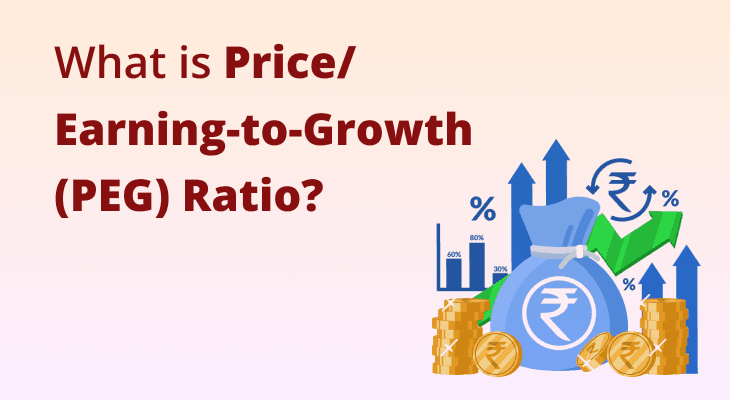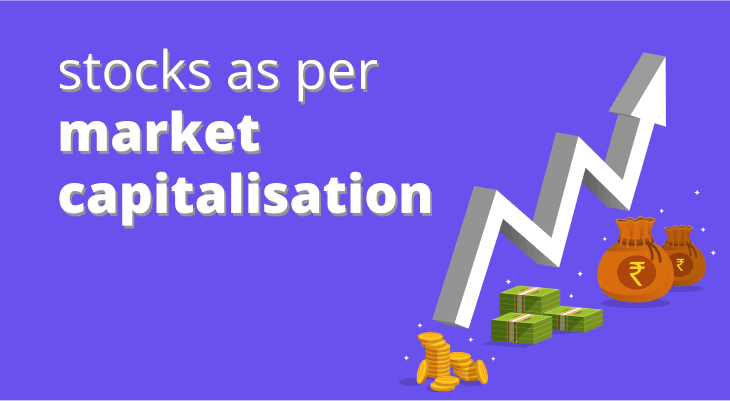
What is Price/Earning-to-Growth (PEG) Ratio?
The Price/Earnings-to-Growth ratio, or Price Earning Growth ratio, or simply PEG ratio, is a popular metric used by investors to evaluate the value of a stock relative to its growth potential. Unlike the traditional Price-to-Earnings (P/E) ratio, the PEG ratio incorporates a company's expected growth rate, offering a more comprehensive view of its valuation. But what exactly is the PEG ratio, and how does it help investors make better decisions? Let’s explore its meaning, formula, interpretation, and limitations.
What is the PEG Ratio?
The PEG ratio is an advanced valuation metric that builds on the P/E ratio by factoring in a company’s earnings growth as well. It provides insight into whether a stock is overvalued, fairly valued, or undervalued based on its growth potential.
How to Calculate the PEG Ratio
The PEG ratio is calculated using the following formula:
PEG Ratio = (P/E Ratio) / Annual EPS Growth Rate
Here’s a breakdown of the components:
P/E Ratio (Price-to-Earnings Ratio): The stock price divided by its earnings per share (EPS). It reflects how much investors are willing to pay for every rupee of earnings.
EPS Growth Rate: The projected percentage increase in the company’s earnings per share over a specific time frame, typically one year.
EPS: Although it is usually provided in a company’s income statement, if not available, it can be calculated using the formula (Net Income – Dividends on Preferred Stock) ÷ Weighted Average Shares Outstanding
Step-by-Step Calculation:
Determine the P/E Ratio:
Use the formula: P/E = Current Stock Price ÷ Earnings Per Share (EPS)
Example: If a stock is priced at ₹ 200 and its EPS is ₹ 10, the P/E ratio is:
P/E = ₹ 200 ÷ ₹ 10 = 20Identify the Annual EPS Growth Rate:
This is often provided by analysts as a percentage. Convert it to a whole number for calculation. For instance, a 15% growth rate is written as 15.Apply the PEG Formula:
Divide the P/E ratio by the EPS growth rate to calculate the PEG ratio.
Detailed Example:
Suppose you are analysing a stock with the following details:
Current stock price: ₹ 300
EPS (Earnings Per Share): ₹ 15
Projected annual EPS growth rate: 20%
Step 1: Calculate the P/E Ratio
P/E Ratio = ₹ 300 ÷ ₹ 15 = 20
Step 2: Note the EPS Growth Rate
EPS Growth Rate = 20%, which is written as 20 for the formula.
Step 3: Calculate the PEG Ratio
PEG Ratio = P/E Ratio ÷ EPS Growth Rate
PEG Ratio = 20 ÷ 20 = 1.0
This means the stock is fairly valued, as its PEG ratio equals 1.
However, if the EPS growth rate is only 10%, the calculation would be:
PEG Ratio = 20 ÷ 10 = 2.0
This indicates the stock might be overvalued relative to its growth potential.
By understanding these steps, you can better evaluate whether a stock is priced appropriately based on its growth rate.
How to Interpret the PEG Ratio
Here's how you can understand and interpret the PEG ratio in simple terms:
1. PEG Ratio of 1: Fairly Valued
A PEG ratio of 1 typically indicates that a stock is fairly valued. This means that the price of the stock is in line with its expected earnings growth rate. Investors are paying a price that reflects both the company’s current earnings and its future growth potential.
For example, if a company has a P/E ratio of 20 and an expected annual EPS growth rate of 20%, the PEG ratio would be 1 (20 ÷ 20 = 1). This suggests that the stock is reasonably priced given its growth prospects.
2. PEG Ratio Below 1: Undervalued
A PEG ratio below 1 suggests that the stock may be undervalued. This could mean that the stock is trading for less than its growth potential warrants, which might indicate a good investment opportunity. Investors are paying less for the growth rate than they would for a stock with a PEG ratio of 1 or higher.
For instance, if the P/E ratio is 15, but the projected EPS growth rate is 25%, the PEG ratio would be 0.6 (15 ÷ 25 = 0.6). This implies the stock is priced lower than its growth potential, which could make it an attractive buy.
3. PEG Ratio Above 1: Overvalued
A PEG ratio greater than 1 typically suggests that the stock may be overvalued. Investors are paying a higher price for the stock relative to its expected growth. This could indicate that the stock is overpriced or that high expectations for future growth are already baked into the price.
For example, if a stock has a P/E ratio of 30, but the EPS growth rate is only 10%, the PEG ratio would be 3 (30 ÷ 10 = 3). This suggests the stock may be too expensive for its expected growth and could be overvalued.
4. Negative PEG Ratio
In some cases, the PEG ratio can be negative if the company’s projected growth rate is negative (i.e., expected to decline). This typically happens when a company is facing financial struggles or operating in a shrinking market. A negative PEG ratio is often a red flag for investors.
What is a Good PEG Ratio?
A "good" PEG value generally depends on the industry and the broader market conditions. In most cases:
A PEG ratio below 1 is considered attractive, suggesting undervaluation relative to growth.
A PEG ratio close to 1 indicates fair valuation.
For high-growth industries, investors might tolerate higher PEG ratios, while in low-growth sectors, a PEG below 1 is preferred.
While useful, the PEG ratio has its limitations, such as:
It relies on future growth estimates, which may not always be accurate.
The metric considers only short-term earnings growth and ignores long-term factors.
It may not be suitable for comparing companies in vastly different sectors with differing growth patterns
Therefore, it is important to not rely solely on the PEG ratio while doing your analysis. Combine it with other financial metrics to get a wholesome view of the company’s performance and its growth prospects.
PEG Ratio vs P/E Ratio
Both the PEG ratio and P/E ratio are important metrics for evaluating a company's stock price, but they serve different purposes. The P/E ratio is a basic measure of valuation, while the PEG ratio provides a deeper understanding by factoring in growth potential. Below is a comparison of the two ratios:
Aspect | P/E Ratio (Price-to-Earnings) | PEG Ratio (Price/Earnings-to-Growth) |
Formula | P/E = Stock Price ÷ Earnings Per Share (EPS) | PEG = (P/E Ratio) ÷ Annual EPS Growth Rate |
Purpose | Measures how much investors are willing to pay for each ₹ 1 of earnings. | Adjusts the P/E ratio for growth, providing a more accurate valuation. |
Focus | Valuation of the company based solely on earnings. | Valuation based on earnings and expected growth rate. |
Growth Consideration | Does not factor in the company's growth rate. | Includes future growth expectations, offering a fuller picture of stock value. |
Best For | Assessing the current market valuation of a company. | Evaluating a company's growth relative to its valuation. |
Interpretation | Higher P/E implies higher market expectations or overvaluation. | A lower PEG ratio (below 1) indicates undervaluation, while higher ratios may suggest overvaluation. |
Ideal Value | No fixed “ideal” value, depends on the industry and market conditions. | A PEG ratio of 1 is typically considered fair value, less than 1 is seen as undervalued, and more than 1 indicates potential overvaluation. |
Conclusion
The PEG ratio is a valuable tool for assessing the valuation of a stock in relation to its growth prospects. It is particularly valuable for growth investors who want to assess whether a company’s stock price reflects its potential for future earnings growth. While it offers more depth than the P/E ratio, it is essential to consider its limitations and use it alongside other metrics for a well-rounded investment analysis.
FAQ
What is the PEG ratio?
The PEG (Price/Earnings-to-Growth) ratio is a financial metric that compares a company's P/E ratio to its expected earnings growth rate. It helps investors evaluate if a stock is fairly priced, undervalued, or overvalued in relation to its growth potential.
How is the PEG ratio calculated?
PEG Ratio = P/E Ratio ÷ Annual EPS Growth Rate
Where P/E is the Price-to-Earnings ratio, and the Annual EPS Growth Rate is the expected yearly growth rate of the company’s earnings per share.
What does a PEG ratio of 1 mean?
A PEG ratio of 1 typically indicates that the stock is fairly valued. This means the stock price reflects both the company’s current earnings and its expected growth rate.
Is a higher PEG ratio always bad?
Not necessarily. A PEG ratio of more than 1 may suggest that the stock is overvalued relative to its growth prospects, but it can also indicate strong future growth potential. It depends on the industry and market conditions.
What does a PEG ratio below 1 indicate?
A PEG ratio below 1 suggests that the stock may be undervalued. This could mean the market has not fully priced in the company’s future growth, potentially presenting an investment opportunity.
How do I interpret a negative PEG ratio?
A negative PEG ratio usually indicates that the company’s earnings are expected to decline. This could signal financial challenges or negative growth prospects, which may raise concerns for investors.
What is the difference between the PEG ratio and the P/E ratio?
The P/E ratio only measures the price investors are willing to pay for a company’s earnings, without considering growth. The PEG ratio adjusts this by factoring in the expected growth rate.
How can the PEG ratio help investors?
The PEG ratio allows investors to compare the stock price relative to future earnings growth, helping them assess if a stock is priced fairly. It can highlight potentially undervalued stocks with good growth prospects or overvalued ones that may not meet future expectations.
What is a good PEG ratio for a stock?
An ideal PEG ratio can vary across industries and market conditions. However, PEG ratio of 1 is generally considered the ideal value, indicating that the stock is priced fairly in relation to its earnings growth.


